Ancient Civilizations Come Alive with Games
A MiddleWeb Blog

Years ago, I did professional development with the Institute of Play* that changed the way I teach.
With a focus on using game design as a way to innovate instruction, I learned how to modify existing games to meet my curricular needs. The student response has been tremendous.
For our Grade 7 Systems and Ancient Civilizations Unit, we played a variety of games designed to teach students systems thinking and content.
Students entered the unit with a varied background on ancient civilizations. I had some Rick Riordan readers who knew more than I ever will, and others who had never thought about the ancient world at all.
From now to then
I wanted to start by showing students how much of our daily life was influenced by the ancient past. I modified the game Apples to Apples and created cards with inventions from a variety of civilizations.
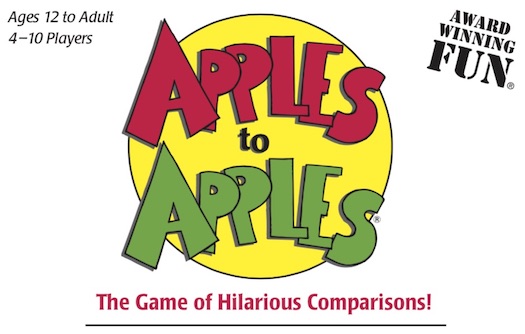
If you’d like to make your own Ancient Apples to Apples game, the cards are linked here at Google Docs. It was an excellent starter activity for our history unit and a fun activity to return to whenever we had extra time at the end of class. In addition, it showed the development of students’ understanding: the more they learned throughout the unit, the more they prized cards like “irrigation” and “domestication of animals.”
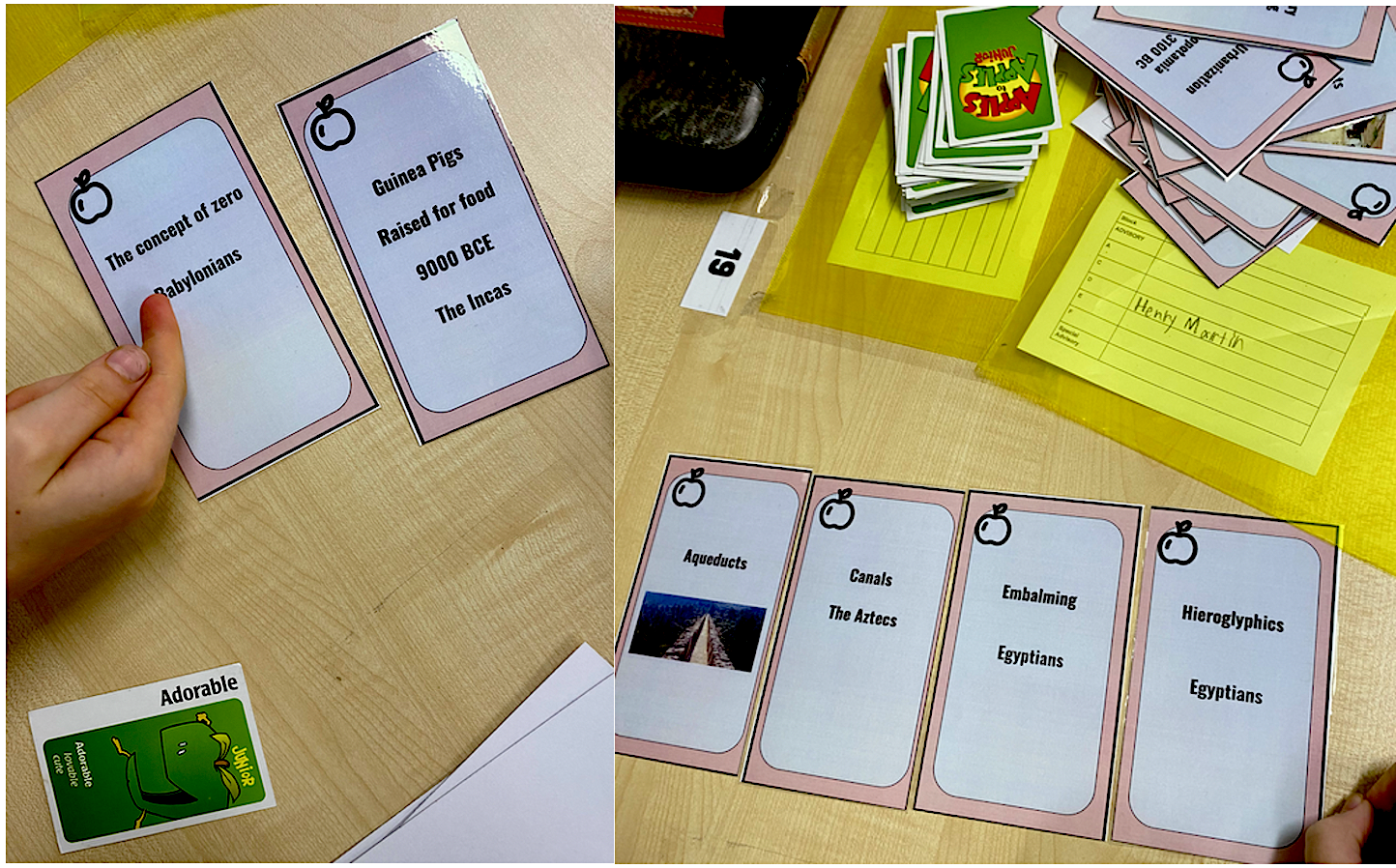
Playing with the impact of geography
Next, I used an Institute of Play game called Galactic Mappers (see purchase link here) to teach students about geography. We used this game to make connections between the location of ancient civilizations and their ability to thrive.
As they created their own continents, students naturally used their geographic vocabulary and reasoned where best to situate the features. I was able to visit the groups and formatively assess their understanding.
When each table group brought their continents together to form a map, we debated which continent would be the best to begin a civilization. The hands-on collaborative nature of the activity helped students understand geography on a deeper level because they were using it to make decisions.
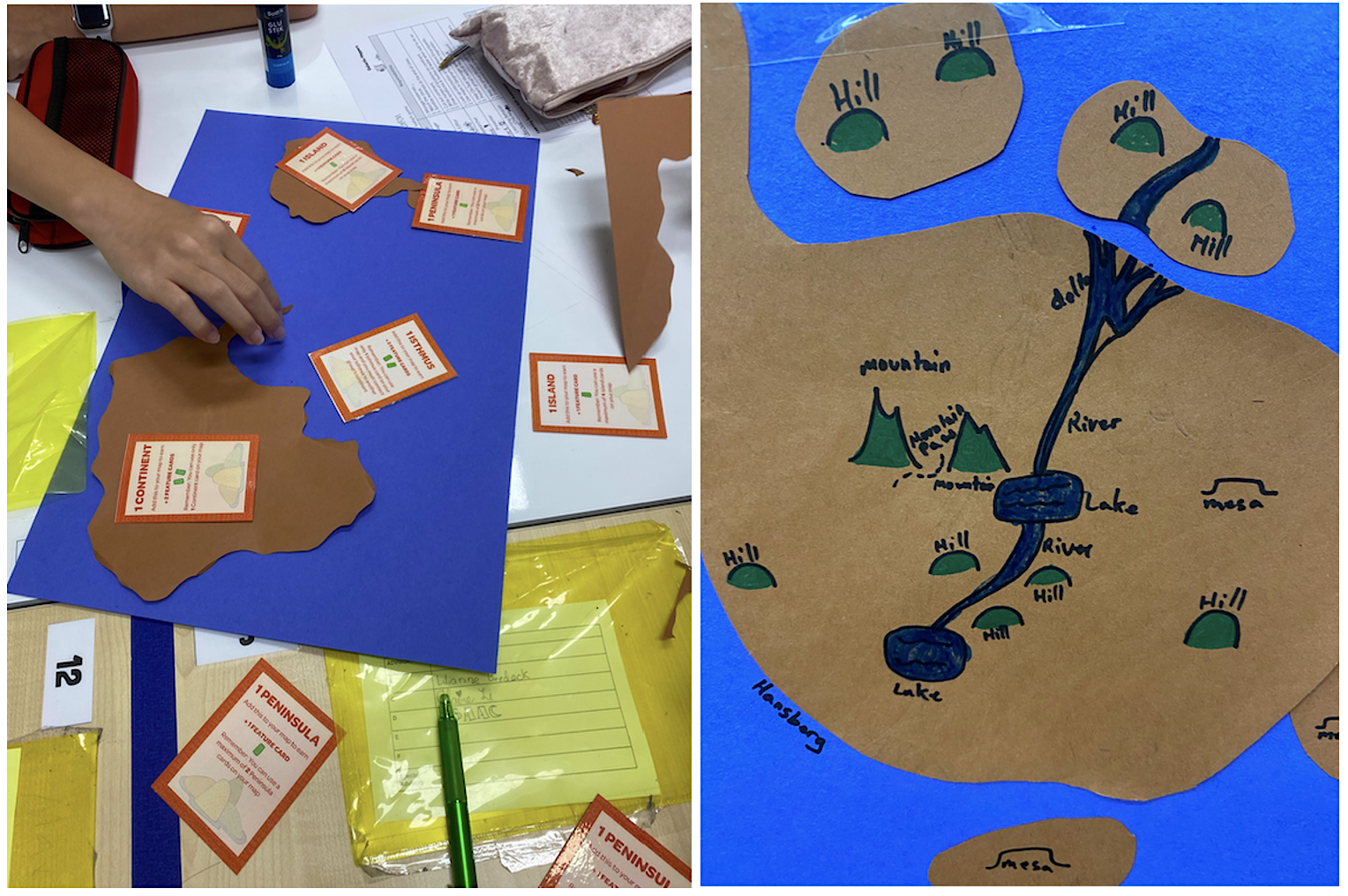
Where city-states come from
Inhabitation, the final game we played, was also created by Institute of Play. This game has students start as hunter-gatherers and work to gain the necessary technology and skills to establish permanent settlements, culminating in the creation of city-states. We rolled this game out slowly: the students learned about neolithic life and then only played up until they gained farming and fishing technology. They then learned about specialization of labor, and we played even more.
Extending the game play made the lessons more meaningful to students, as they were always looking for new ways to improve their chances in the game. At the end of each session, students wrote a claim about the systems they encountered in the game that day. Student claims like “The Neolithic people had to be very strategic to survive the Stone Age” and “Events that change the environment could be devastating for Neolithic civilizations” demonstrate a deeper understanding of the perils of ancient life.
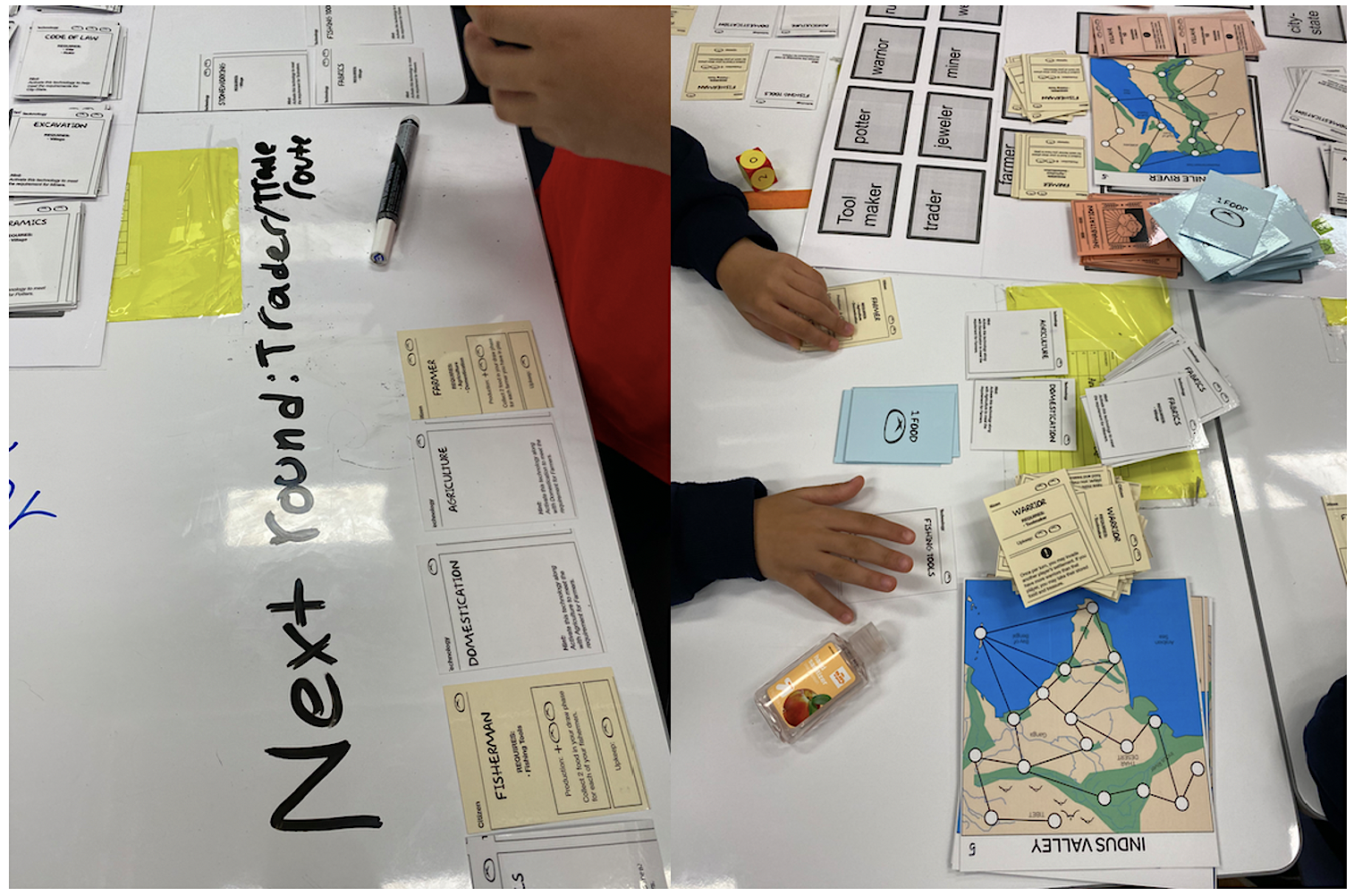
Creating a civilization to share
The summative assessment for the unit was a fun way for students to demonstrate their understanding of the systems involved in an ancient civilization that they researched. Students created “Choose Your Own Adventure” stories for their classmates to follow. There are many tutorials for how to create these stories on Google Slides. Here’s one from Richard Byrne:
The students created a narrative for their classmates to follow, and they got to play each other’s games, which taught them about different locations and alternative ways that systems are connected.
A sample Choose Your Own Adventure Slide
Have you tried game-based learning?
We all want our classes to end with students complaining when it’s time to pack up. This game-based unit achieved that for me, and I am already trying to figure out how to incorporate the same skills throughout the rest of the year. If you use games for instruction and assessment, please share your suggestions in the comments.
*Institute of Play closed in 2019. Some of their resources are now available at Connected Learning Alliance. including the Quest Design Pack, a tool to help teachers learn to design games. Another excellent resource for teaching games: The Game Crafter.

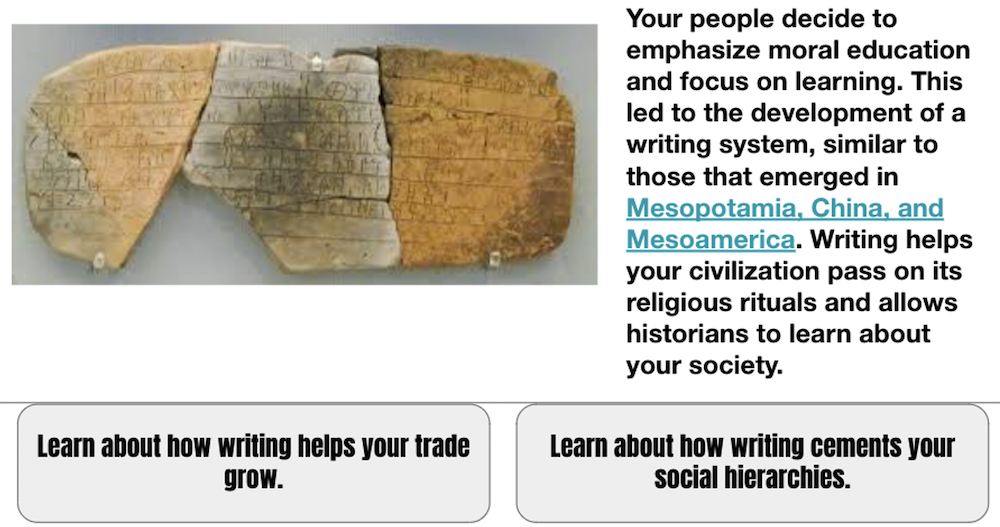




























Hi! I’m searching for the Inhabitation game and I cannot find it anywhere! Would you be able to tell me where I could find it? Thank you!
Hi Jordyn, I don’t think it is available online anywhere. Sorry!
Hi! I have read you’re written and find the Inhabitation Game to be interesting and an excellent activity to make after a discussion about the first stage of civilization. Can you please give us more details and information about this game?
Thanks for the question. As Megan’s article notes (at the end), the Inhabitation Game was created by the gamemakers’ collective Institute of Play, which disbanded several years ago. Their archives are said to be managed by the Connected Learning Alliance which may eventually make the game available again. If anyone knows of another source for the game, please leave the information here!